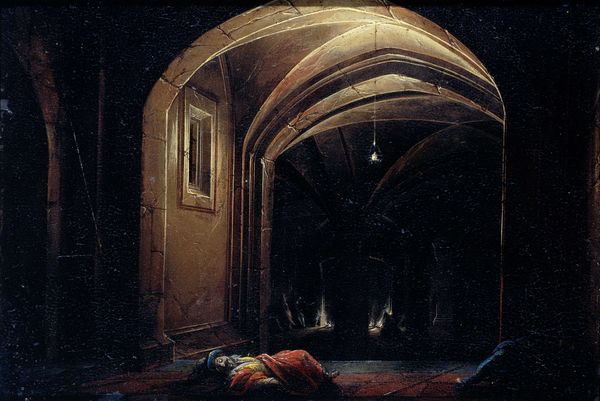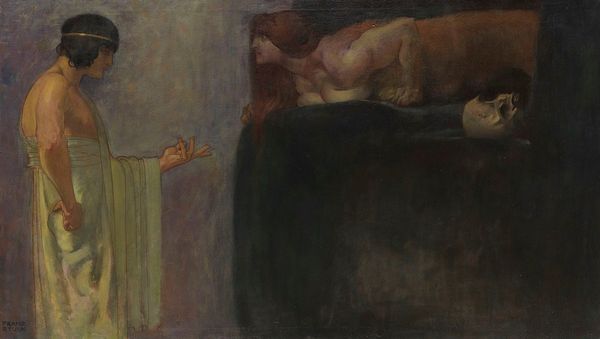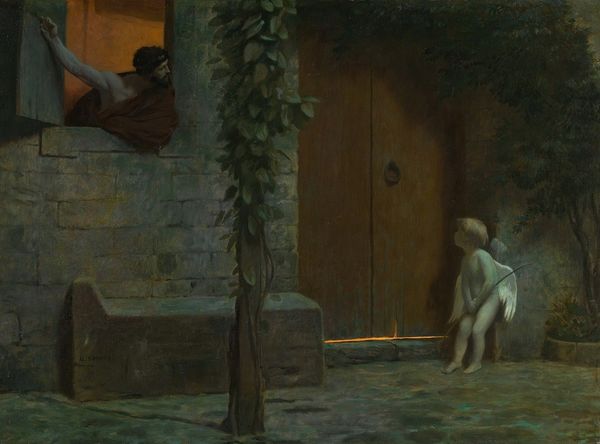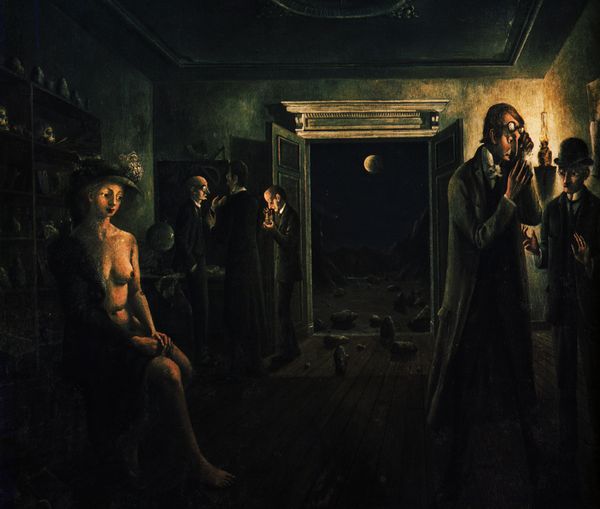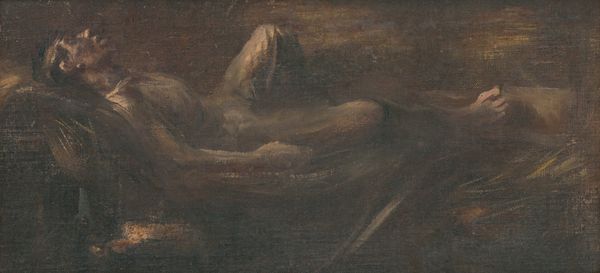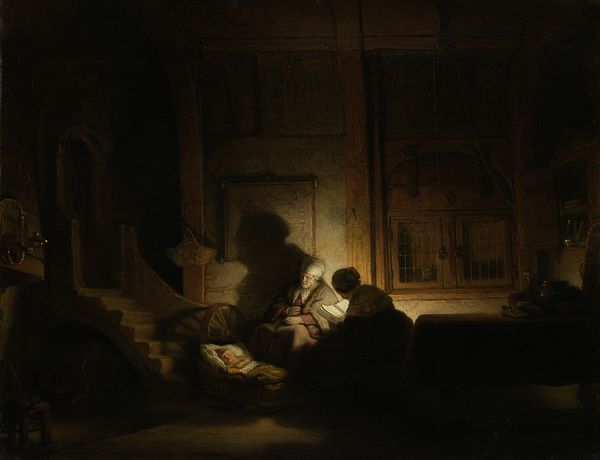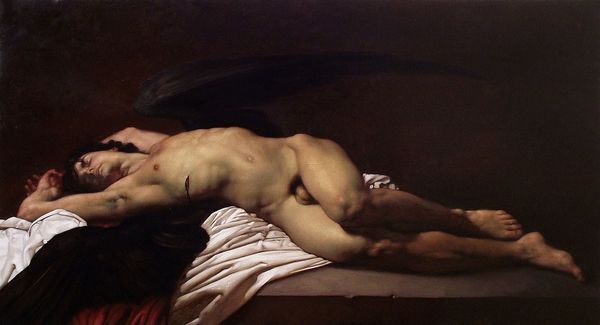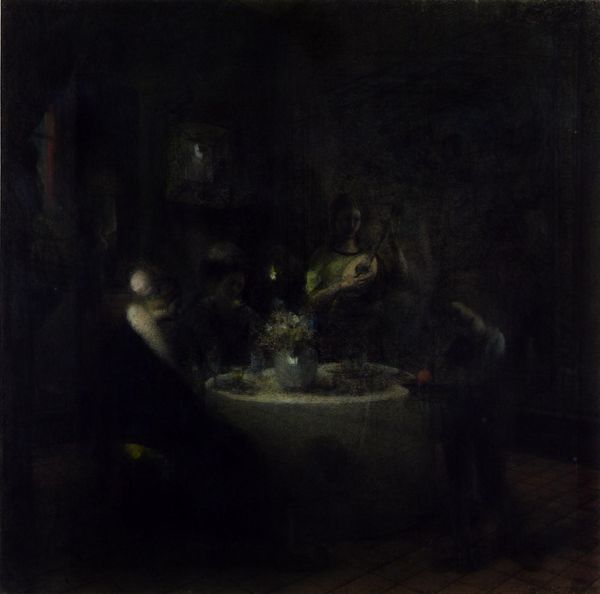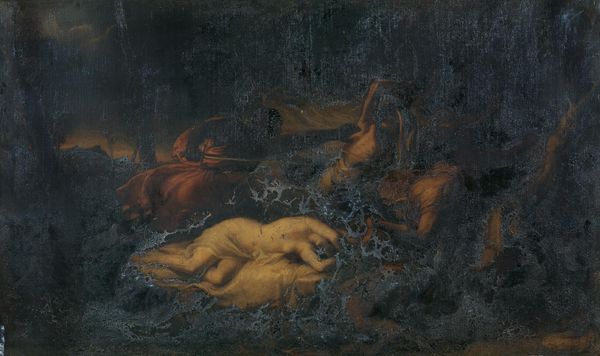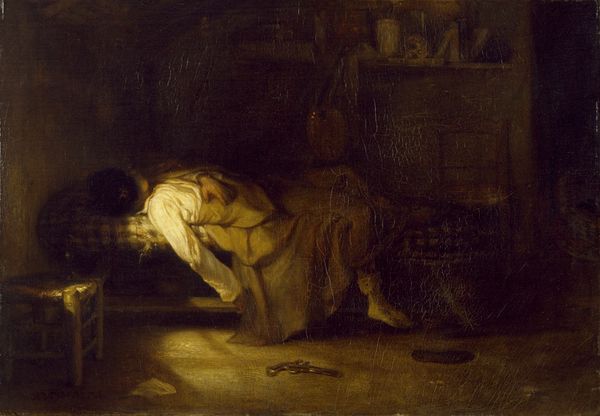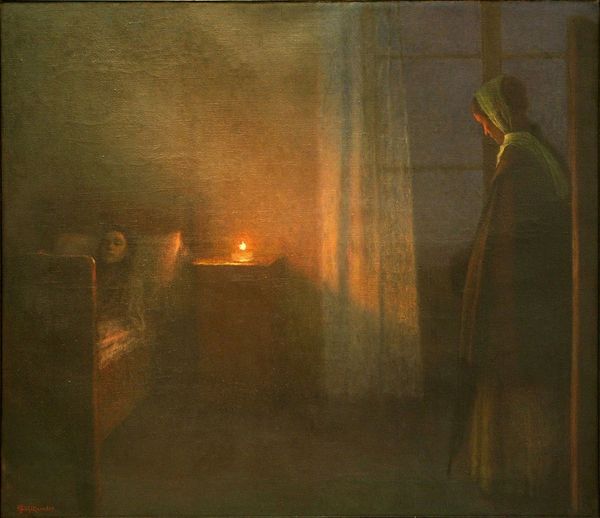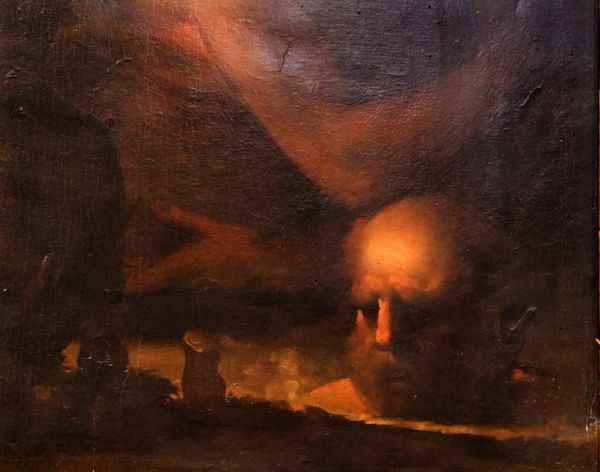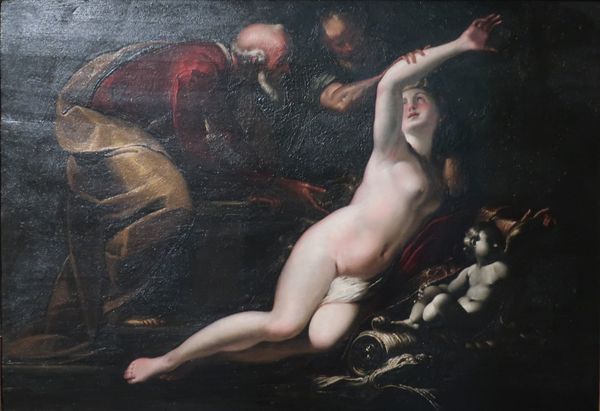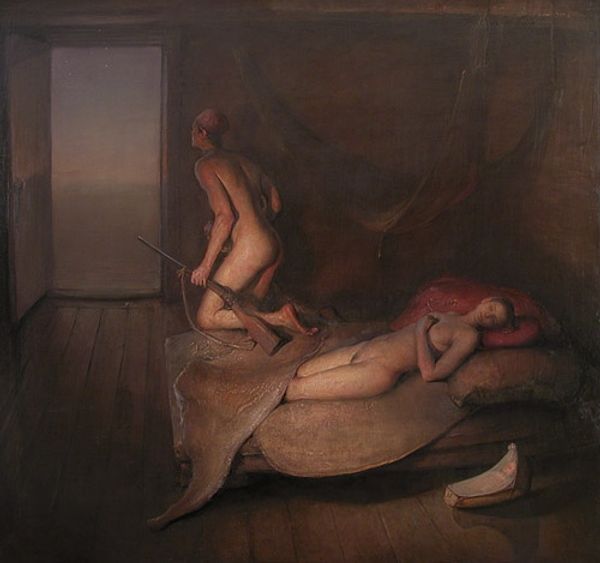
Dimensions: support: 1530 x 2134 mm
Copyright: CC-BY-NC-ND 4.0 DEED, Photo: Tate
Editor: This is Philip Hermogenes Calderon's *St Elizabeth of Hungary’s Great Act of Renunciation*. It is quite dark, and the contrast between light and shadow is striking. What do you see in the composition, particularly how the light is used? Curator: The tenebrism is certainly notable, creating a dramatic contrast. The artist employs light not merely to illuminate but to sculpt the form, directing the viewer's eye. Consider how the light falls on the figure of St. Elizabeth, drawing attention to her posture. Editor: It's almost as if the light itself is enacting the renunciation, stripping away the material world to reveal something more essential. Curator: Precisely. The formal elements – the stark contrast, the positioning of the figure, the subdued palette – coalesce to communicate the act of self-denial and spiritual transformation. The composition mirrors the theme. Editor: I hadn't considered how the form itself reinforces the narrative. Thanks!
Comments
tate 8 months ago
⋮
http://www.tate.org.uk/art/artworks/calderon-st-elizabeth-of-hungarys-great-act-of-renunciation-n01573
Join the conversation
Join millions of artists and users on Artera today and experience the ultimate creative platform.
tate 8 months ago
⋮
Elizabeth of Hungary (1207-1231) was the wife of Lewis, Landgrave of Thuringia. After his death in 1227 during one of the Crusades, she entered a convent and devoted herself to good works. Before becoming a nun, she passed through a spiritual crisis, torn by the need to renounce the world, and therefore her children, in order to fulfil her desire to serve God. Pressed by a domineering monk, Conrad, whose natural affections had been starved by celibacy, Elizabeth finally vowed that 'naked and barefoot' she would follow her 'naked Lord'. Calderon's picture shows this moment of self-abasement. Calderon took his subject from a play by Charles Kingsley, 'The Saint's Tragedy', first published in 1848. It was based on fact. Gallery label, September 1998
